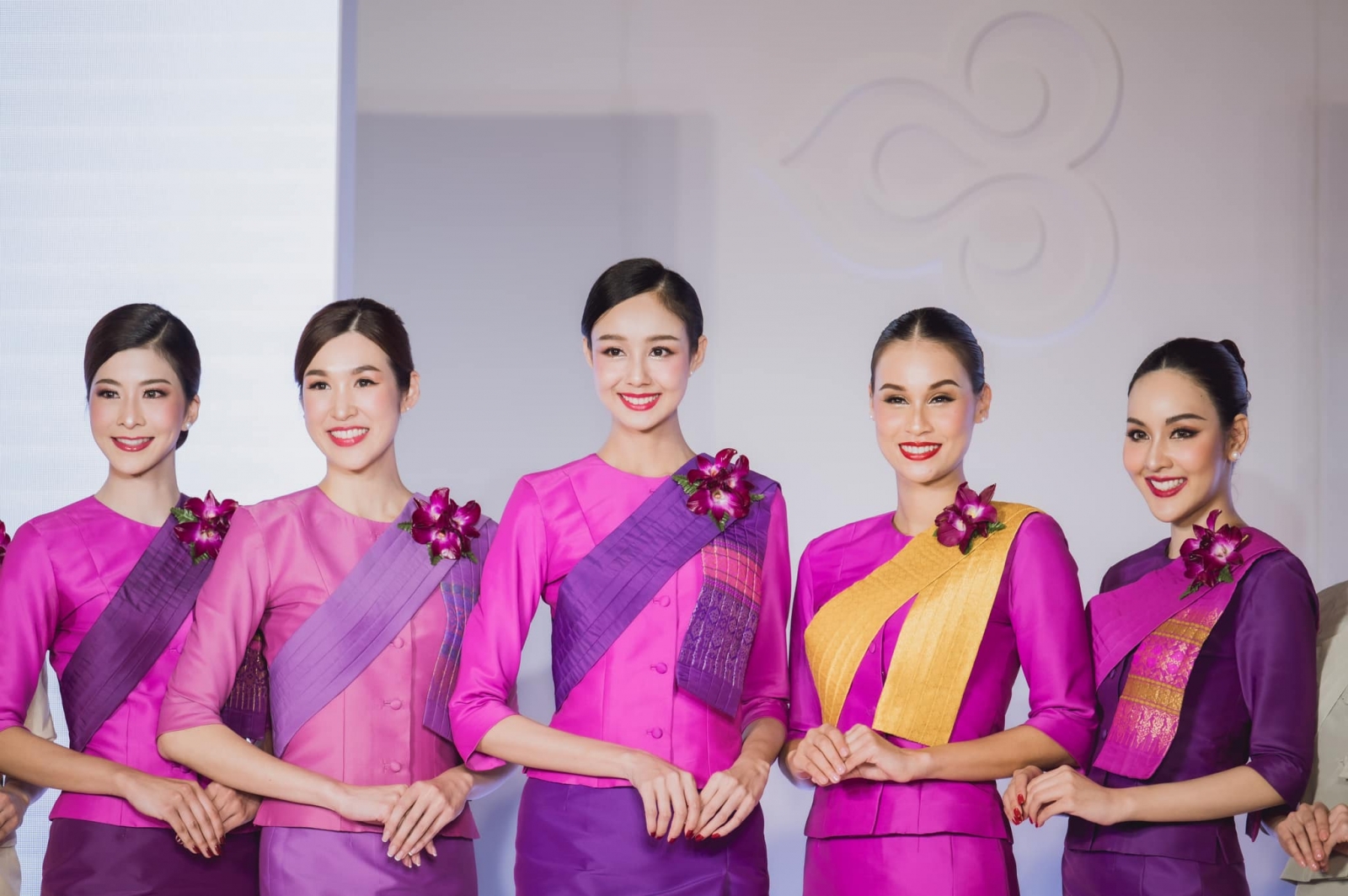Sustainable development has become main topic in business sector includes aviation industry. Thai Airways has unveiled its new uniform, which blended with recycle material, for female cabin crew last Thursday and expects to launch on 1 January 2024.
The Thai Ruean Ton, the Thai national dress, has been worn by Thai flight attendants for over six decades. The new uniform is made from a blend of traditional Thai silk and fibers derived from recycled materials, specifically PET plastic bottles left on planes. The fabric is made of 30% Thai silk and 70% recycled plastic fibers which is about 54 plastic bottles for one uniform. And the production cost is not significantly increasing.

Thai Airways unveiled new cabin crew uniform. (Photo: Thai Airways)
The new initiative is part of the airline’s Zero Waste Living project, which consists of three pillars – from planes to planet, from waste to wealth, and from purple to purpose. Thai airways is committed to achieving a net zero emission goal by 2050.
Thai Airways isn’t the first airline to explore sustainability with regards to its cabin crew uniform. This July, Finnair revealed that it is giving old uniforms a new lease of life by both recycling and upcycling the clothing into garden furniture with durability and sustainability. Air New Zealand, meanwhile, is launching a search for a designer to create new uniforms ensuring the fabrics used have a low environmental impact, as well as looking for solutions for the existing uniform, to minimize waste to landfill.

(Photo: Thai Airways)
Aside from uniforms, the industry is trying to use Sustainable Aviation Fuels(SAF)to lower fuel consumption and carbon dioxide emissions. However, an aviation expert underscores the key challenges.
Alton Aviation Consultancy director Alan Lim said, in an interview with TTR Weekly, that the sky-high prices of SAF, around three times that of conventional jet fuel due to limited supply, raise questions about the adoption and the level of government support for SAF, especially in Asia. Price sensitivity affects competitiveness and ultimately dampens growth at a time when governments hope for a robust tourism industry to boost foreign exchange earnings.
According to IATA, in 2022, approximately 300 million litres of SAF were produced, accounting for less than 0.1% of the global jet fuel consumption. To achieve the net-zero 2050 target, where SAF is expected to contribute 65%, IATA projects a need for approximately 450 billion litres of SAF by 2050.


